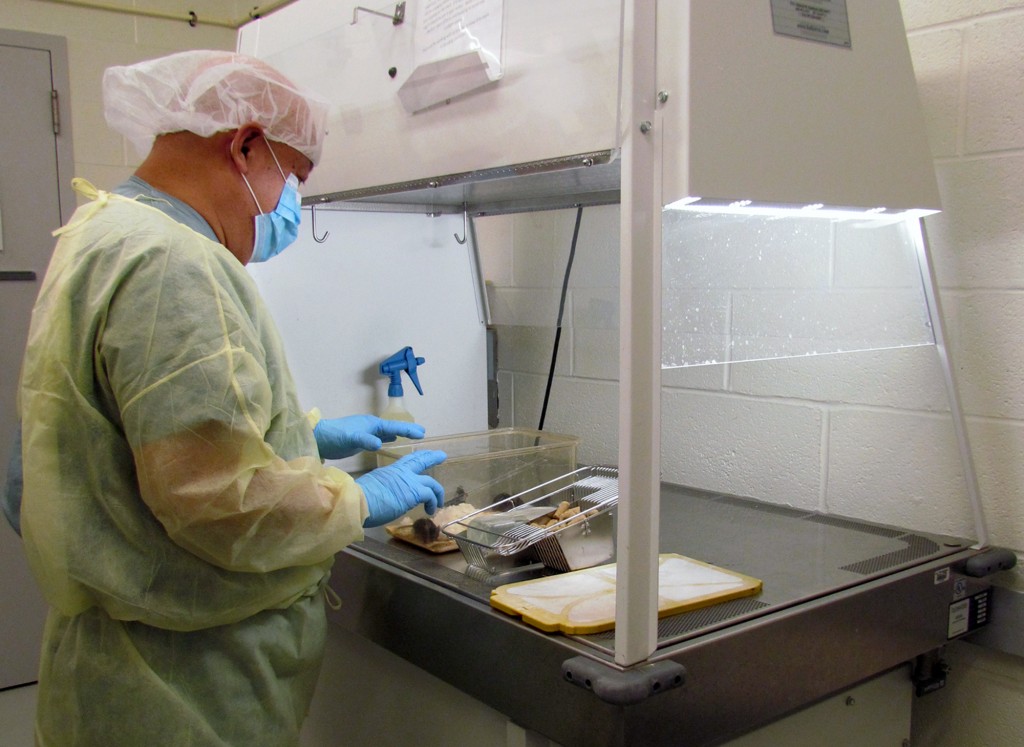Scientists Focus on Another Sandy Loss – Lab Mice

It was one of the most dramatic stories from Superstorm Sandy: more than 300 patients including tiny babies safely removed from a flooded New York hospital that lost power. But in a research building at the complex, where thousands of lab mice were kept, the story had a sadder ending.
A storm surge into the basement swamped some 7,000 cages of mice used for studying cancer, diabetes, brain development and other health issues. Each cage held up to five of the little rodents, and even four months later, nobody knows exactly how many perished.
Now, about 50 scientists at the NYU Langone Medical Center are going through the slow process of replacing them. What they lost in a few minutes one terrible night in October will take more than a year to recover, at a cost of tens of millions of dollars.
That’s because, for the most part, they can’t simply buy the mice off the shelf. Most were tailor-made, engineered to carry specific genetic mutations to mimic human diseases and conditions such as autism.
For researcher Sergei Koralov, the flooding meant the loss of about 600 mice. Gone, for example, were his animals that helped illuminate how genetic changes in white blood cells lead to lymphoma and those he used to study what triggers chronic lung inflammation in asthma.
“I was devastated,” he recalls.
Koralov has contacted scientists in the U.S., Switzerland and Germany in an effort to rebuild his mouse colonies. Scientists often share mice with other labs.
But it’s not as easy as just shipping mice to New York. The mice at NYU live in a super-clean environment, and those imported from other labs carry a risk of contamination. So scientists use them to create a new generation of animals that are quarantined and checked for germs before they enter their NYU home.
Not all the mice in the basement died in the flood; those in about 600 cages were rescued about a week afterward. Their handlers had put extra food in their cages before the storm, just in case.
Much of the effort to replace the mice is taking place elsewhere. The Jackson Laboratory in Bar Harbor, Maine, which distributes more than 6,000 kinds of modified mice to labs around the world, is working on at least 200 types for the New York researchers, said the lab’s Stephen Linnell.
So what can be done to prepare for the next big storm?
At NYU Langone, officials will consider waterproofing strategies for one building that houses mice underground, and they are working on “an aggressive evacuation plan,” said Dafna Bar-Sagi, the center’s vice dean for science.
This article appeared in print on page 4 of edition of Hamodia.
To Read The Full Story
Are you already a subscriber?
Click "Sign In" to log in!

Become a Web Subscriber
Click “Subscribe” below to begin the process of becoming a new subscriber.

Become a Print + Web Subscriber
Click “Subscribe” below to begin the process of becoming a new subscriber.

Renew Print + Web Subscription
Click “Renew Subscription” below to begin the process of renewing your subscription.











